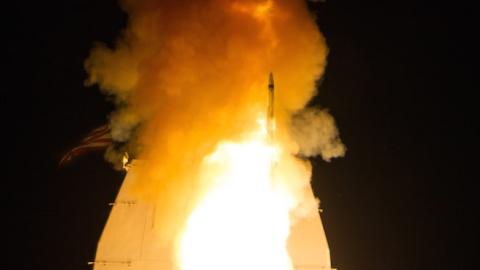The slogan of the once famous Mad Magazine's mascot, Alfred E. Neuman, is “What, me worry?” Mad saw its heyday when many of the current administration’s senior officials were in college. The gulf between the Obama administration’s defense policy and the world is evidence that they seem to have taken the slogan to heart.
This past week, media widely reported North Korea’s failed ballistic missile tests. Despite the usual rhetoric from the regime, both midrange missiles crashed shortly after launch. While North Korea’s latest launch may have failed it certainly made headlines. And for every story that hits the airwaves there are countless others detailing China, Iran and Russia’s growing and evolving military and missile capabilities that don’t see the light of day.
Take China’s hypersonic missile test on April 27th. The DF-21, a medium-range ballistic missile launched from mobile platforms like truck beds was initially designed as an anti-satellite weapon. It is very fast: 4,000 – 7,000 miles per hour. Combined with its maneuverability, the DF-21 can evade most missile defense systems, destroy ships and satellites. China’s cache of air, sea and ground-launched missiles of varying ranges and the country’s “anti-access area denial” (A2AD) strategy in the Asia-Pacific aims to force high-value American assets, such as aircraft carriers, to remain outside effective combat range.
America’s other major potential adversaries, Iran and Russia, are developing similar combinations of weapons. In the Middle East, Iran is likely only behind Israel in missile technology – having already developed medium-range ballistic missiles (1,000 - 3,000 km range), and has accumulated an arsenal of sea-skimming cruise missiles to target American ships. Iranian acquisition of the Russia-made S-300 missile system will further complicate America’s ability to assist its Middle Eastern friends. Iran combines this with a sustained proxy campaign in Iraq, Syria, and Lebanon, denying the U.S. any friendly location to build up ground forces.
Russia takes a similar approach to that of Iran and China. It uses an overlapping network of S-400 missile systems, cruise missiles, and land-based Intermediate Range Ballistic Missiles (outlawed in the Russo-American INF treaty) to counter American aerial, land-based, and naval assets. Russia’s military modernization projects will come to fruition in the early 2020s, integrating highly maneuverable fighter aircraft, advanced tanks, and even hypersonic missiles like the DF-21 into Putin’s arsenal.
The Obama administration has responded weakly. As Russia, China, and Iran’s militaries expand, the Obama Administration is cutting the American defense budget—depleting not only the U.S. military’s fleet of ships and planes, but also the precisions weapons and missiles they carry— making it more difficult for the U.S. to provide for the common defense, deter adversaries and honor commitments to allies.
The U.S. Navy is the driver of our defenses in the Asia-Pacific and an integral component to the U.S.’s “phased adaptive approach,” to missile defense. Yet, the current Navy of 272 ships is at its smallest size since before the First World War. Due to Secretary of Defense Carter’s plan to cut ship numbers to free up funds for more advanced technologies, the Navy will fall far short of its 308 ship goal, and will likely shrink even further, to 240 or 260 ships.
In addition to the shipbuilding shortfall, the administration isn’t funding critical American missile defense programs—the firepower necessary to outfit our fleet. The Standard Missile (SM) family of interceptors is our nation’s most effective long-range ABM tool. The SM-3 IIA and IB variants are deployed on American Aegis-equipped Arleigh Burke-class Destroyers and Ticonderoga-class Cruisers.
The President’s budget includes a $189 million shortfall for the SM-3 interceptor program, handicapping the SM-3 IB procurement line with a $159 million shortfall, and the SM-3 IIA line with a $30 million decrement. This creates a 19-missile shortfall for FY17, which makes American assets and allies more vulnerable in the short term, and increases future procurement costs to make up the gap. Unit costs for Block IB missiles of $11 million make the program relatively affordable, especially when compared to the $100+ million per unit cost of each F-35 fighter/bomber.
The administration either overlooked the consequences of such a seemingly small cut, since $189 million is a rounding error compared to the multi-billion dollar budgets lawmakers work with daily, or determined that the SM-3 program, and missile defense more broadly, was not critical to U.S. security.
In either case it’s an example, writ small, of the current administration’s dim view of the importance of strong U.S. defenses. Restoring proper funding to missile defense will not solve all of America’s strategic problems. However, the next president will be well advised to pay more attention both to details of the military budget and the overall state of our defenses. Just as small steps in the wrong direction undermine good policy, small steps in the right direction reinforce it.















